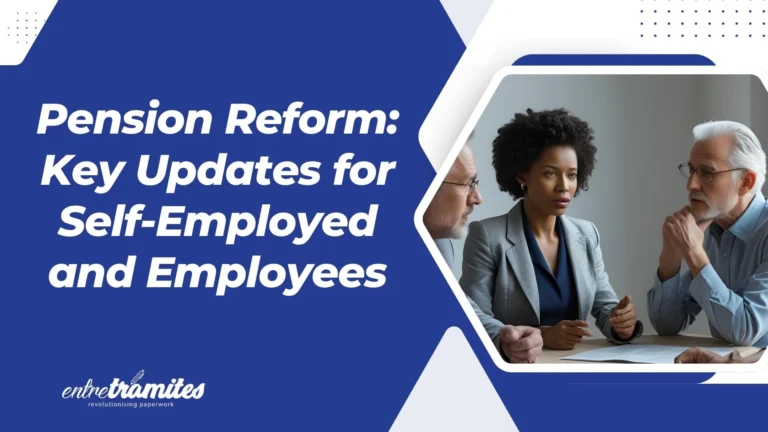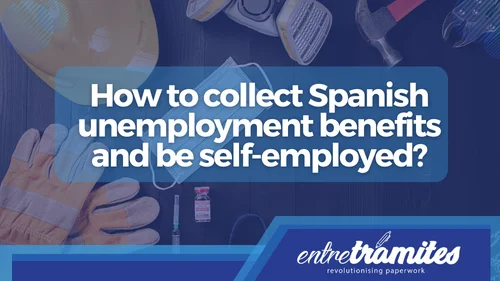The Spanish pension system is a fundamental pillar of the country’s welfare state, but its long-term sustainability has been the subject of constant debate and reform. In recent years, the government has pushed for significant changes to ensure the system’s viability for future generations. If you want to understand the impact of the current pension reform in Spain, especially for the self-employed, this article offers a clear and updated overview of the rights, obligations, and changes that affect you.
The Latest Pension Reform in Spain: A Commitment to Sustainability
The most recent pension reform in Spain, approved in 2023 via Royal Decree-Law 2/2023 in Spanish Real Decreto-ley 2/2023, was designed to strengthen the viability of the public system and adapt its benefits to Spain’s demographic and labor reality. One of its main focuses has been equity in contributions and benefits, significantly impacting self-employed workers. It is crucial to understand that this reform seeks to balance the accounts without compromising the adequacy of future pensions.
Key Changes for the Self-Employed: The New Real Income Contribution System
Until recently, self-employed workers contributed by choosing a base within a pre-established range, regardless of their actual income. This led many to contribute on the minimum base, resulting in significantly lower future pensions compared to salaried employees.
The 2023 pension reform in Spain introduced a major change for this group: a new contribution system for self-employed individuals based on their real income, which came into force on January 1, 2023. This model establishes fifteen contribution brackets that adjust to the self-employed person’s net earnings. This means that Social Security payments vary depending on what is actually earned, with a transitional period until 2032 for full implementation. For example, in 2024, a self-employed person with net earnings of between €1,160 and €1,300 per month contributes on a minimum base of €1,269.30, while a self-employed person with earnings over €6,000 contributes on a base of €4,720.50.
Impact of the Reform on the Self-Employed: Advantages and Challenges
This change has a dual impact on the self-employed:
- Increased Contributions: Many self-employed individuals, especially those with higher incomes who previously contributed on the minimum, will see a progressive increase in their monthly Social Security fees. This may require an adjustment in their personal finances and business planning.
- Improved Future Benefits: The trade-off for these higher contributions is a gradual equalization with the benefits of salaried workers. By contributing on higher bases that are in line with their real income, the self-employed will be able to access higher and fairer retirement, temporary disability, maternity/paternity, or cessation of activity pensions. This provides greater financial security and stability for their future and that of their families.
For example, a self-employed person who previously contributed on the minimum base but had good income will now contribute more, but in return, their future pension will be considerably larger. This promotes equity and reduces the gap between pensions for salaried and self-employed workers.
Main Changes in the General Pension System (beyond the self-employed)
The pension reform in Spain affects more than just the self-employed. It also introduces other key measures for the entire system aimed at strengthening its stability:
- Pension Revaluation with CPI: The commitment to annually revalue pensions in line with the average Consumer Price Index (CPI) of the previous twelve months is maintained, ensuring that pensioners do not lose purchasing power. In 2024, contributory pensions were revalued by 3.8%.
- Intergenerational Equity Mechanism (MEI): This new mechanism replaces the Sustainability Factor and seeks to reinforce the pension reserve fund. It consists of a temporary additional contribution that will be gradually applied until 2030, paid by both the company and the worker. For example, in 2024, the MEI represents 0.7% of the contribution base, with 0.58% paid by the company and 0.12% by the worker.
- Strengthening Maximum Contribution Bases: The maximum contribution bases are expected to increase above the CPI to boost the system’s revenue.
- Calculation of Years for Pension Calculation: The reform introduces the possibility of choosing the most favorable years of contribution for the pension calculation. The calculation period will be progressively expanded to 29 years, allowing for the selection of the best 27, which can benefit workers with more irregular careers.
How to Prepare for the Future: Strategies for Self-Employed and Workers
Given this pension reform, it is essential for both self-employed and salaried workers to take steps to secure their financial future:
- Self-employed: Review your invoicing and net earnings to adjust to the new contribution system. It is vital that you plan your finances to manage the new fees and, if possible, consider contributing above the minimum if your income allows to ensure a better future pension. Having specialized advice, like the services we offer at Entre Trámites, can be key to optimizing your contributions and avoiding surprises with the Tax Agency.
- All workers: Diversifying savings is more important than ever. In addition to the public pension, consider private pension plans, investment funds, or individual savings. Long-term planning will allow you to supplement your public pension and enjoy a more comfortable retirement.
Frequently Asked Questions (FAQs)
When did the new self-employed contribution system come into force? The new contribution system for the self-employed, based on real income, came into force on January 1, 2023.
What is the Intergenerational Equity Mechanism (MEI)? The MEI is a temporary additional Social Security contribution, paid by the company and the worker, designed to reinforce the pension reserve fund and ensure the system’s sustainability.
How will my pension be calculated in the future? The reform is gradually expanding the calculation period for pensions up to 29 years, from which the best 27 years will be chosen for the calculation. This allows workers to remove their two worst years of contributions, which may be beneficial if they had periods with lower income.
The pension reform in Spain is an ongoing process that seeks to adapt the system to demographic and economic challenges. Staying informed about these changes is essential to planning your future and ensuring a peaceful retirement. Whether you are self-employed or a salaried worker, understanding how these changes affect you will allow you to make smart financial decisions and make the most of the opportunities the system offers.
If you need personalized assistance, at Entre Trámites we offer management and tax advisory services for freelancers and SMEs. You can contact us through this contact form for us to call you, or if you prefer, you can schedule a free consultation or write to us on WhatsApp.



